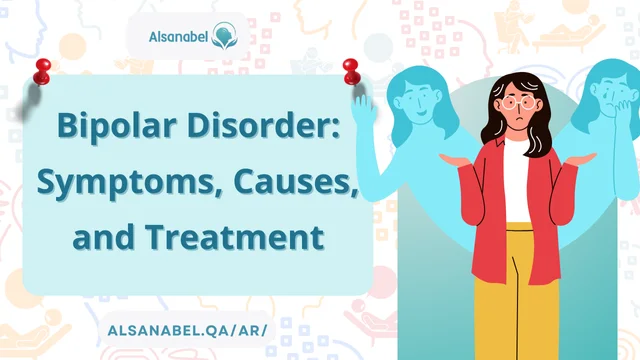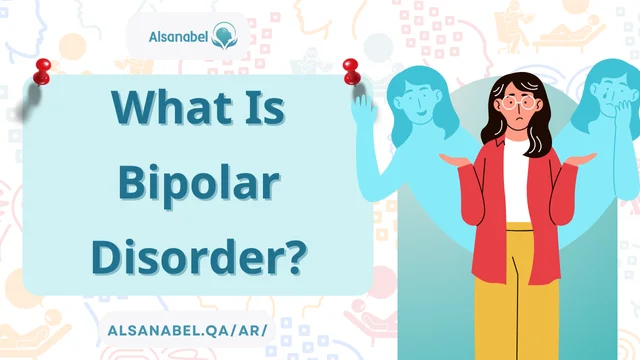
Bipolar disorder is a complex mental health condition that significantly affects mood, energy levels, and behavior. Individuals diagnosed with bipolar disorder experience dramatic shifts in their emotional states, ranging from intense highs (mania or hypomania) to deep lows (depression). While the condition is challenging, understanding it and recognizing its symptoms can lead to effective management and a higher quality of life. This article explores the various aspects of bipolar disorder, including its types, symptoms, causes, and available treatments.
What Is Bipolar Disorder?

Defining the Condition
Bipolar disorder is a chronic mental health disorder characterized by alternating periods of elevated mood, known as mania or hypomania, and periods of depression. These mood episodes can range in intensity and duration, impacting various aspects of a person’s daily life, including work, relationships, and overall functioning.
How It Differs From Normal Mood Swings
Unlike normal mood changes, the mood shifts in bipolar disorder are extreme and can last for days, weeks, or even months. They interfere with an individual’s ability to function effectively and often require medical intervention for stabilization.
Types of Bipolar Disorder
Bipolar I Disorder
This type involves at least one full manic episode that lasts for at least seven days or requires hospitalization. Individuals with Bipolar I may also experience depressive episodes, although they are not required for diagnosis.
Bipolar II Disorder
Bipolar II disorder is characterized by at least one hypomanic episode and one major depressive episode. Hypomania is less severe than full-blown mania and does not typically require hospitalization.
Cyclothymic Disorder
This milder form of bipolar disorder includes chronic mood fluctuations that don’t meet the criteria for full manic or depressive episodes. The symptoms must persist for at least two years in adults or one year in children.
Other Specified and Unspecified Bipolar Disorders
These categories encompass bipolar-like mood disturbances that don’t fit the standard diagnostic criteria for the above types but still cause significant distress.
Symptoms of Bipolar Disorder
Manic and Hypomanic Symptoms
During manic or hypomanic episodes, individuals may experience:
- Increased energy or restlessness
- Euphoric or excessively irritable mood
- Reduced need for sleep
- Racing thoughts or rapid speech
- Inflated self-esteem or grandiosity
- Engaging in risky or impulsive behaviors, such as excessive spending or reckless driving
Depressive Symptoms
The depressive phase is marked by symptoms such as:
- Persistent sadness or hopelessness
- Fatigue or lack of energy
- Difficulty concentrating or making decisions
- Changes in appetite or sleep patterns
- Feelings of guilt or worthlessness
- Suicidal thoughts or behaviors
Mixed Episodes
Some individuals may experience symptoms of mania and depression simultaneously, known as mixed episodes, which are particularly challenging to diagnose and treat.
Causes and Risk Factors
Genetic Influences
A family history of it significantly increases the risk of developing the condition. Researchers believe that specific genes contribute to the disorder, although no single gene has been identified.
Brain Chemistry and Structure
Imbalances in neurotransmitters, such as serotonin, dopamine, and norepinephrine, are believed to play a role. Additionally, imaging studies have shown structural differences in the brains of individuals with bipolar disorder.
Environmental Triggers
Stressful life events, such as trauma, loss, or significant changes, can act as triggers for bipolar episodes. Substance abuse and sleep disturbances are also known to exacerbate symptoms.
Bipolar Disorder Treatment
Medication Options
Effective treatment often includes a combination of medications, such as:
- Mood Stabilizers: Lithium is a commonly prescribed mood stabilizer that helps reduce manic and depressive episodes.
- Antipsychotics: Medications like olanzapine or quetiapine are often used to manage acute manic or mixed episodes.
- Antidepressants: These may be prescribed cautiously and often in combination with a mood stabilizer to prevent triggering mania.
Psychotherapy
Therapeutic interventions provide essential tools for understanding and managing the condition. Common approaches include:
- Cognitive Behavioral Therapy (CBT): Focuses on identifying and changing negative thought patterns.
- Psychoeducation: Helps individuals and families learn about the disorder and its management.
- Interpersonal and Social Rhythm Therapy: Aims to stabilize daily routines and relationships.
Lifestyle Changes
Lifestyle modifications play a vital role in living with it. Recommendations include:
- Maintaining a consistent sleep schedule
- Practicing stress-reduction techniques, such as yoga or meditation
- Engaging in regular physical activity
- Avoiding alcohol and recreational drugs
Living With Bipolar Disorder
Challenges of the Condition
Living with bipolar disorder can be challenging due to the unpredictable nature of mood episodes. Individuals may struggle with maintaining relationships, holding steady employment, or achieving academic goals.
Building a Support System
Having a robust support system is critical. Family, friends, and support groups can provide emotional assistance and encouragement during difficult times.
The Importance of Early Intervention
Early diagnosis and treatment significantly improve outcomes. Regular check-ins with a healthcare provider can help monitor progress and adjust treatment plans as needed.
Frequently Asked Questions

1. What are the differences between Bipolar I and Bipolar II Disorder?
Bipolar I involves at least one manic episode, whereas Bipolar II is characterized by hypomania and depressive episodes. The manic episodes in Bipolar I are more severe and disruptive.
2. What are the symptoms of a manic episode?
Symptoms include heightened energy, decreased need for sleep, impulsive behavior, rapid speech, and exaggerated self-confidence. These symptoms can escalate to risky or harmful actions.
3. How is bipolar disorder treated?
Treatment typically involves a combination of medication, psychotherapy at Al Sanabel Specialized Psychiatric Center In Qatar, and lifestyle adjustments. The approach is tailored to the individual’s needs and the severity of their symptoms.
4. Can bipolar disorder be hereditary?
Yes, genetics play a significant role in the risk of developing bipolar disorder. Having a close family member with the condition increases the likelihood of diagnosis.
5. What are the long-term effects of bipolar disorder?
Without treatment, bipolar disorder can lead to disrupted relationships, financial difficulties, and an increased risk of substance abuse. However, with proper management, individuals can lead fulfilling and productive lives.
Bipolar disorder is a multifaceted condition that affects millions of individuals worldwide. By understanding the types of bipolar disorder, recognizing the symptoms, and pursuing effective treatment, individuals can achieve stability and improve their quality of life. With the right support, education, and proactive care, those living with bipolar disorder can navigate its challenges and thrive.

